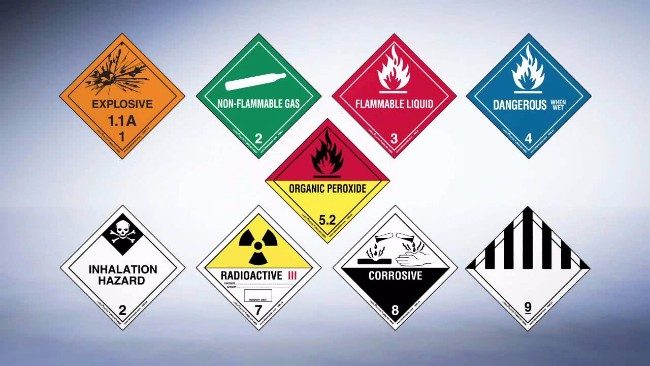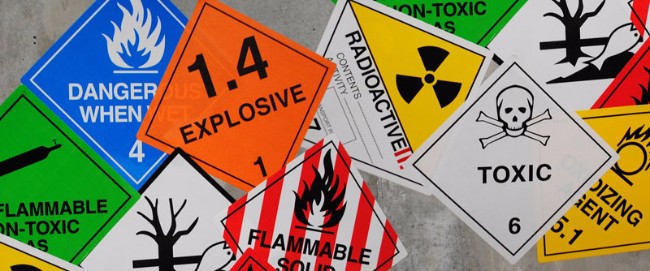Well that’s pretty broad, isn’t it?
But not to worry, fortunately for you there is the Department of Transportation (DOT). They have broken it down into 9 categories:
- Class 1 – Explosives;
- Class 2 – Gases;
- Class 3 – Flammable liquid and combustible liquid;
- Class 4 – Flammable solid, spontaneously combustible, and dangerous when wet;
- Class 5 – Oxidizer and organic peroxide;
- Class 6 – Poison (toxic) and poison inhalation hazard;
- Class 7 – Radioactive;
- Class 8 – Corrosive;
- Class 9 – Miscellaneous.

There now, isn’t that much better?
Well if you don’t like either of their explanations, there are plenty of others. For example, you can always check out these different agencies:
- Pipeline and Hazardous Materials Safety Administration (PHMSA);
- Occupational Safety and Health Administration (OSHA);
- Environmental Protection Agency (EPA);
- Institute of Hazardous Materials Management;
- State and local regulatory agencies.
Now, of course, these aren’t the only agencies, but you get the point there is a lot of discussion and oversight regarding hazardous cargo.






